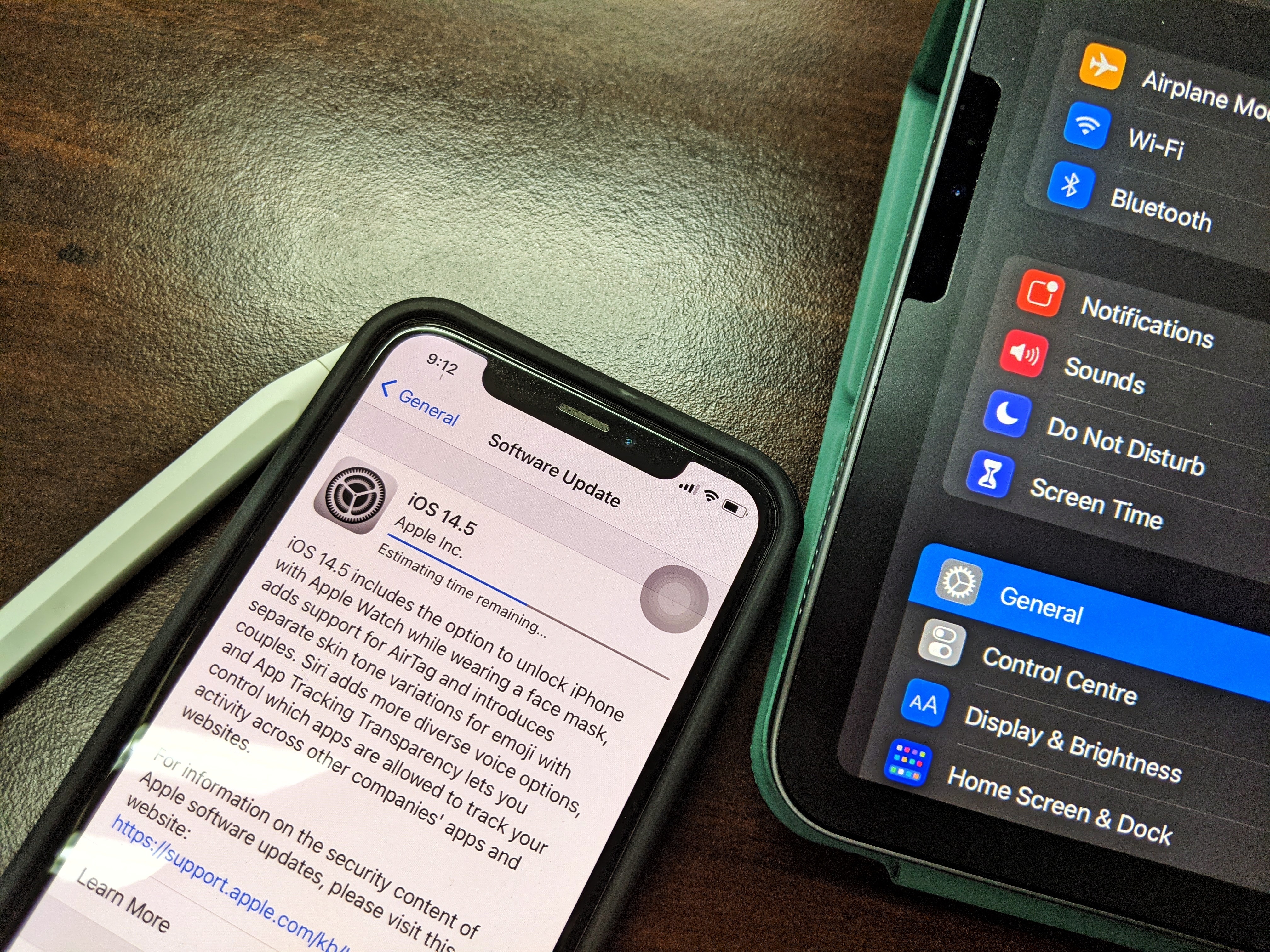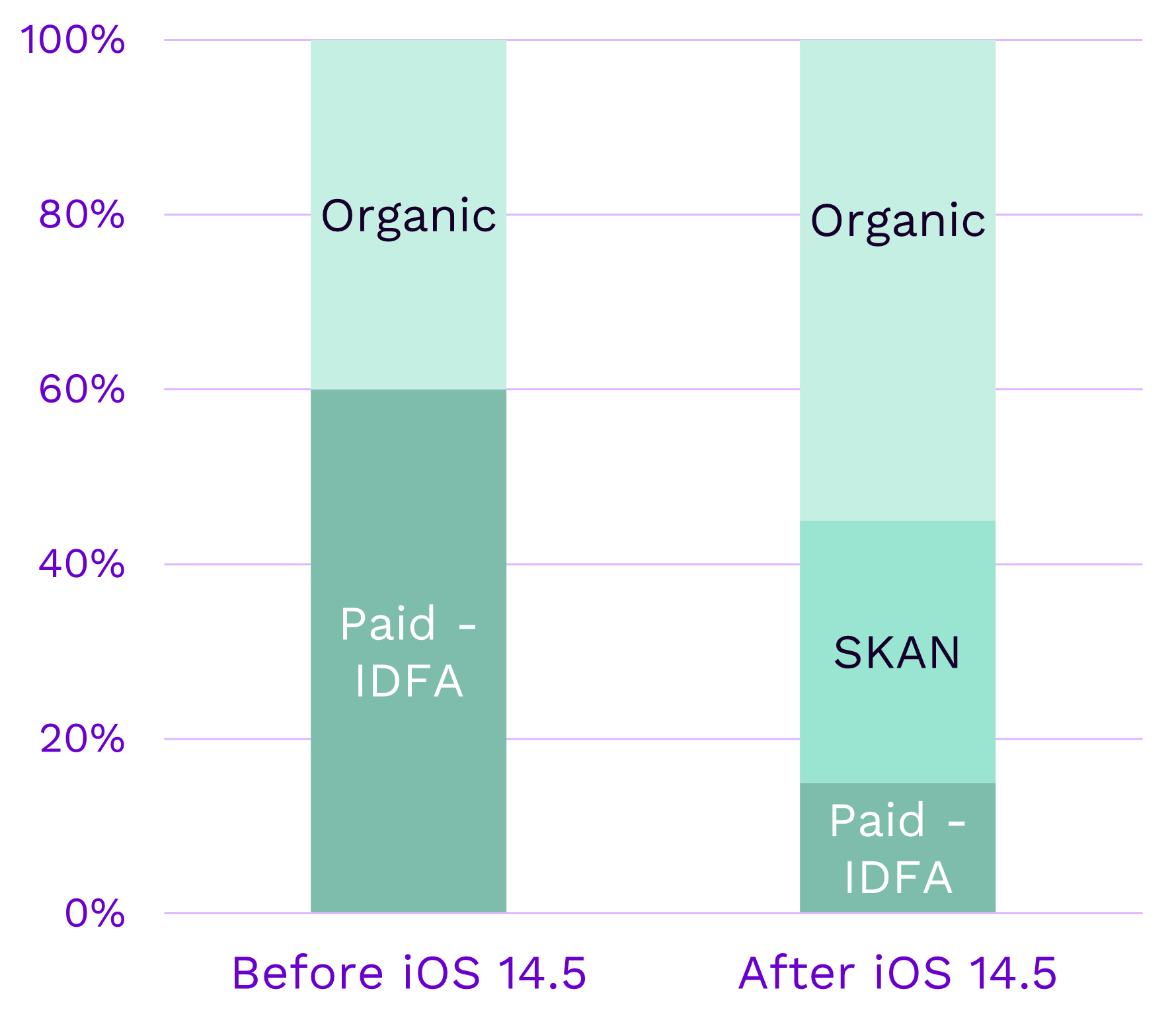Understand the SKAdNetwork data to maintain the performance level of your UA campaigns

Since May 2021 (iOS 14.5), Apple has implemented the ATT, which limits the feedback of data for advertising campaigns. Apple’s aim is to promote the protection of user data. The problem for the mobile industry: acquisition campaign data is no longer fed back as minutely and no longer allows for the reading performances in the same way within tracking tools.
As a reminder, if the user opts in on the consent pop-up, then we can recover the IDFA and use deterministic attribution as a basis. The SKAdNetwork is the allocation solution offered by Apple. It serves as a backup when the data is not received in the event users don’t opt-in.
Up to 80% less IDFA on IOS
According to Appsflyer, 40 to 50% of people give their consent via the pop-up. This does not mean that the IDFA is fed back, because the user must also have agreed on the distribution platforms (such as Facebook, TikTok, Snapchat, etc.). In the end, we find ourselves with only 20 to 30% of the IDFA fed back, which is critical for the results to be read correctly.
As the iOS paid campaign data is now limited, there is a real challenge, namely in reading the said data in order to make the right decisions in terms of the profitability of user acquisition campaigns. However, today, we see app editors having real difficulty in understanding and processing this data. Even if the opt-in and SKAdNetwork logics are integrated, this is not the case for reading the results. It is easy to consider that the performances are poor without understanding why and cutting the campaigns in question, thus cutting yourself off from a potentially profitable audience.
Paid installations attributed to organic
In this customer example, we see that less deterministic data has been fed back since the ATT was implemented. Some have not been fed back by Apple in the SKAdNetwork because the users opted out. They, therefore, fall into organic. In this case, we clearly see that 15% is attributed to organic, whereas the true campaign structure appears more like the one on the left, so we need to understand where this 15% has come from.
Before / after SKAdNetwork attribution

Thanks to our methodology, and our predictive modeling, we are able to re-assign these installations for a more accurate and exploitable reading of the data.

In this case, we, therefore, apply the prediction using the SKAdNetwork, the Android organic, and the IDFA-related data, in order to try and offset the variance between graphs 1 and 2. “This data may not be organic, it comes from Snapchat or Facebook, etc.. ». Our teams go even further down the funnel. Most of the time only the installation is fed back for paid campaigns via SKAN. This solution allows for predicting the other events monitored in the campaigns and for having a better read of the performances.
What methodology should be put in place?
At Addict Mobile, we assist our customers in implementing a high-performance mobile marketing strategy. Since the release of iOS 14.5, we have been assisting all our customers with this change in order to continue to generate performance through our campaigns. To do this, we have established:
- A specific team for the subject, which ensures that all Addict Mobile employees understand the challenges linked to these new tracking methods and adopt the right approach.
- Regular monitoring of all the new arrivals on the market, new Apple features and MMP modules. Our position as the preferential partner of tracking tools and acquisition sources allows us to be informed upstream of these developments.
- The implementation of a dedicated methodology. We analyze all available data. From these data we make projections. We create projections from these data. By studying how deterministic data behave, we build prediction models. This is a heavy, important and specific work for each application.
- The provision of a Dashboard adapted to these issues to track the data integrating these predictions facilitating the reading and understanding of iOS performance within the same dashboard. This way we have a global vision that allows us to make better decisions.
- The creation of specific reports adapted to the needs of our customers for a better understanding. Without this work, the latter would be obliged to go to the various Dashboards (for MMP, for SKAdNetwork, etc.) in order to collect the data, which is rarely done because it is too cumbersome to implement.
As Android has also announced the implementation of limitations in the near future, fully understanding the specific features of these new tracking methods has become the #1 challenge for all mobile apps in 2023. We need to be ready for this if we want to continue to get everything out of user acquisition campaigns.
NEWS
Article in relation

UA: How GenAI helps us diversify our creative…
-5% CPI, +23 points ROAS, GenAI creatives are increasingly becoming a performance driver for apps. When combined with a traditional approach, they allow...
Published on 8 July 2024
Interview with Chloé Morant, Senior UA Manager and…
Meet Chloé, Senior UA Manager and ASO Team Leader at Addict Mobile. She joined in 2021 as a UA Manager and is now...
Published on 11 June 2024
Our 4 Tips for UA Creatives That Convert
We cannot emphasize enough: creativity is crucial for the success of user acquisition campaigns. It’s an essential element that can greatly impact performance...
Published on 20 May 2024

